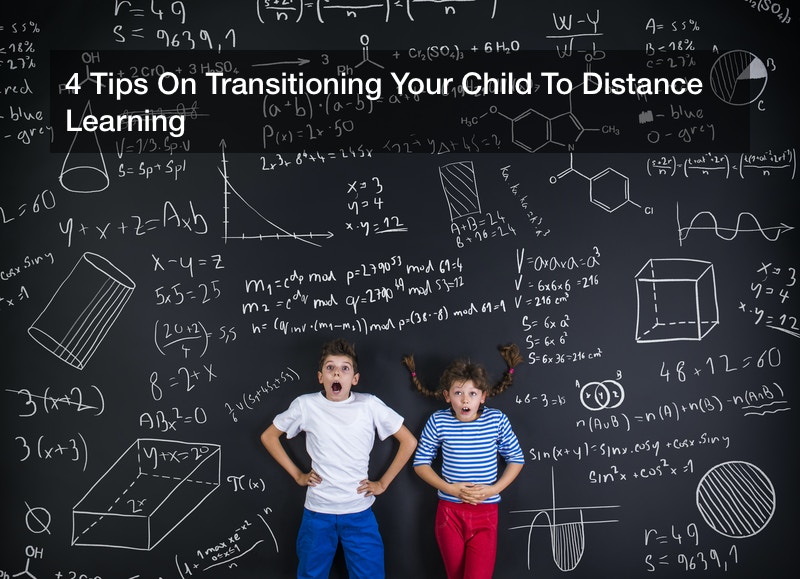

The COVID-19 pandemic has changed the way that we live in the United States, and it may very well change the way that we live for a long time. Millions of Americans remain out of work due to the pandemic, but many have maintained their jobs by working from home in a way that they didn’t before.
Perhaps one of the most prominent ways in which the pandemic has affects our daily lives is that countless children are no longer attending school in a traditional sense. The reasons why millions of American children are currently attending a virtual learning program rather than traditional schools are myriad. The most important reason, however, is that kids and school employees alike are at a high risk of catching COVID-19 when traditional school is in session. Even when class sizes are lowered through tactics like part-time schooling, it can be difficult to ensure that children properly socially distance and wear masks. Kids are difficult to discipline under normal circumstances at school and may not always listen to their teachers. As many children are also being given conflicting advice from their parents and their teachers regarding the pandemic, this makes the issue even more difficult to understand and actually distracts from learning. The CDC also recently announced that the coronavirus can be spread through particles in the air and that a distance of six feet apart may not be enough to prevent the spread of the virus. As there are currently no vaccines for children or adults, many states have deemed that it simply isn’t safe for school to be in regular session.
Of course, not all state rules are alike. Some states are planning on gradually moving away from virtual learning programs and back to traditional school once it is safe. Others already have traditional school back in session, with varying results. Others still have children attending traditional schools for half the time and attending virtual programs the other half of the time. But many parents also prefer virtual school over traditional school, understandably, as they’re worried about the health of their children. With that being said, it’s estimated that two-thirds to three-quarters of all teachers believe that their students are less engaged in remote instruction than they were prior to the pandemic. Fortunately, there are ways that you can set your child up for the best possible results when learning remotely. Let’s look into them!

1. Make Sure They Have Consistent Access To Technology
This is perhaps the most basic part of ensuring that your child succeeds when taking on a virtual learning program. Virtual learning is dependent on consistent access to technology. Now, not every household has the same access to the technology, which is why many school districts that require virtual learning have been providing students with school laptops that will allow them to learn effectively on a mechanical level. A good laptop for virtual learning will not only be able to access the internet, but will also facilitate video conferencing technology, microphone technology, and speakers so that students can hear their teachers properly.
But a laptop is not the only piece of technological equipment that students need to learn. The older the student, the more advanced their technology will need to be in order for them to succeed. Therefore, it’s a good idea for you to provide access to printers, scanners, and headphones as well as laptops for your children. You should also have be in touch with laptop repair specialist if anything happens to your kids’ computers. If you’re working with a school-provided laptop, they should be able to cover the costs of equipment issues, unless perhaps they were caused by the student directly.That said, it’s not enough to just have the hardware necessary for your children to succeed. They also need a good internet connection, as well as access to the school’s web servers. Obviously, internet access doesn’t come cheap. But you may want to consider paying for a higher speed Wifi service temporarily while your children are learning through a virtual learning program. Luckily, there are a number of different packages made available through different wifi companies in this day and age, and furthermore a number of different options available for those who need to boost the capabilities that they already have. Of course, investing in a stronger internet plan isn’t just good for your kids. If you work at home or could be working at home in the future, it can be beneficial to you, as well.

2. Create A Study Space
It makes sense that some kids are having a harder time with virtual learning programs in the face of the pandemic. The fact is that it’s often easier for kids to become distracted when conducting virtual learning because they aren’t in a classroom where they can focus on one task at a time. For that matter, children often aren’t always required to turn on their cameras when they’re learning virtually. This means that though they can see their teachers, their teachers can’t see them. Where a teacher can normally point out a child that isn’t paying attention, it’s now much more difficult for teachers to hone in on kids that may not be paying attention properly. Ultimately, this results in a more frazzled teacher, as well as a child who isn’t learning to the extent that they should be.
For that matter, a lot of children are struggling with the ability to turn in work in a timely manner due to confusing regarding the technology used in virtual learning. This is something that you as a parent need to survey by looking over your child’s work and ensuring that it’s turned in on time. However, you can’t be watching them every single moment of the day. This ultimately means that you need to set aside a space that can become something of a classroom for your children until they can go back to learning as they once did. Learning how to concentrate independently is an important part of child development, but it’s something a lot of kids need help with, and that’s okay.
Try to set aside a space that has great lighting, as well as some peace and quiet. This may mean up giving up your own office space for part of the day so that your child can learn. And if you can, you should consider doing this. But otherwise, you may want to set aside a part of the house or even your child’s bedroom where they don’t have access to the television other other distractions. It should be well-regulated in terms of temperature, and ideally will have the kind of internet connection that is optimal for your child’s virtual learning program. As some areas of the house may have stronger connections than others, this is something you should keep in mind. You may want to look up the way that early learning centers design their learning spaces and model yours after that. Ultimately, you’re trying to create a space where your child can concentrate and really absorb what they’re learning. It is probably also a good idea to make sure that they don’t have access to their phones and tablets during these learning hours, just as they wouldn’t during regular school.

3. Fuel Their Learning Properly
Kids always need to eat right if they want to learn to the best of their abilities. Since a lot of kids have an even harder time learning through virtual learning programs, this means that you need to make sure that their food is stepped up a little bit. You should probably begin by cutting out foods that may be detrimental to their learning, like junk foods and fast food. While your child may love pepperoni pizza, it may not be the food most conducive to their learning process. At the same time, this doesn’t mean that you have to cut that food out permanently or all of the time. It just needs to be a significantly smaller portion of your child’s diet. A good idea would be to possibly turn these foods into end of the week treats or rewards. If your child really wants to have pizza, perhaps you should set a goal for them: if they want to have pizza at the end of the week, they need to get a certain score on their test.
As the parent, you have a lot of control over what your child eats, of course. The best thing that you can do is to prepare as much food as possible on your own and to incorporate “brain foods” that have been proven to help children learn and concentrate. You should make sure that your child has three balanced meals a day. While a lot of kids skip breakfast, you’ll want your child to start the day right as they take part in their virtual learning programs. Think about offering egg-based breakfasts, as eggs are proven brain foods. Scrambled eggs and omelettes are delicious and you can slip veggies in with them to further provide healthy options for kids. Apples, plums, blueberries, and Greek yogurt are also known to stimulate the brain, and you can actually combine these ingredients into smoothie bowls for a healthy lunch that also sates your child’s craving for sweet foods. To finish off the day, you may want to consider offering your child fish for dinner. While some kids love fish more than others, there are so many ways in which you can prepare fish that will appeal to kids — and it’s great for powering the brain. In general, protein and carbs are important for energy and stamina, so plan out meals that will keep your kid going all day long.

4. Create A Task Chart
As much as you may provide your child with all of the food, technology, and space that they need to be success in a virtual learning program, a lot of it is going to come down to them. All of the IT access in the world won’t help a child that isn’t on task and concentrating. Therefore, it’s a good idea to establish a routine early with your child. Let them know about the expectations that you have, and set them to task on checking off different things, perhaps on a chart. When your child has finished all of their tasks for the day or the week, you may want to give them rewards.
While some parents may balk at the idea of rewarding their children for schoolwork that they need to do no matter what, the fact is that virtual learning programs are not like the school systems that your children are used to. You may need to go above and beyond to keep them motivated. For that matter, you need to consider whether or not your children would be more committed to studying if they were in a routine and in a system that was rewards-based. It’s not enough for your children to simply complete their schoolwork. You want them to do well in school! A lot of that is going to require working on a rewards-based system and really ensuring that your children are committed to their work. Why rewards-based? Because typically, parents have more success with this type of system than a punishment-based system. Kids feel more motivated to work for a reward than they are to work away from a punishment.
There are a lot of different factors to consider when your child begins a virtual learning program. Chances are that it will be challenging at first and you may face some setbacks at times. But ultimately, this is for their safety, the safety of their peers, the safety of their teachers, and the safety of your family. Remember that as your child begins distance learning, this is all temporary. Eventually, your child will return to traditional school. And they’ll be thankful that you helped them through this challenging time.



